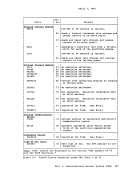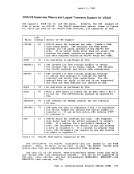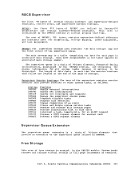The four methods of accessing
1
3 ..
Relative Block
Relative Track
The restrictions on these access methods are as follows:
records, since
logical track, and 256 records on all other logical tracks,
regardless of the block size. If
and the RECFM is
on the first track and 256 records on every track thereafter, or he
must not update the track indicator until a
returned on a write. For method 3
when no more dummy records can be found on a
methods 2 and 4, this will not occur, and the track indicator will be
updated only when the record indicator reaches 256 and overflows into
the track indicator.
open at the same time. If a program that is updating keys does not
close the file it is updating for some reason, such as a system
failure or another
are not fixed format are saved in a temporary file with the same
filetype and a filename of
program again.
made without
the FILEDEF command. The default size is















































































































































































































































































































































































































































